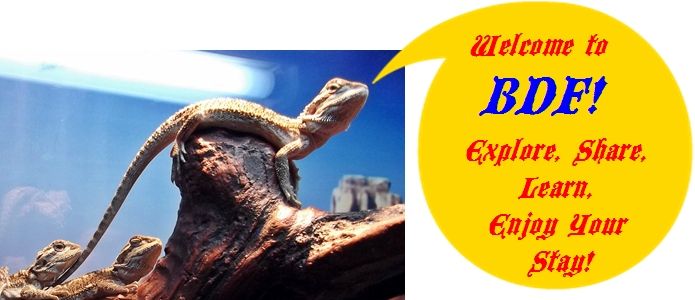Animal lvr
Bearded Dragon Egg
- Messages
- 4
I just adopted a year old BD from a young boy after I fell in love with my son's baby BD (4 months old). My problem is that I do not think he was properly cared for. He did not have a UVB light and he has been fed meal worms and they said he did eat a little kale (he does however look healthy other than the tip of his tail missing). As a year old BD, shouldn't he be eating primarily greens? I am having a difficult time getting him to eat his salad. He will eat a few pieces from my hand but not a lot is missing from his bowl. He does seem to like the crickets ok but goes nuts when he sees the meal worms (they gave me their remaining worms). Should I only offer crickets every couple days and just feed the salad twice daily? Any suggestions would be appreciated. Thanks!

